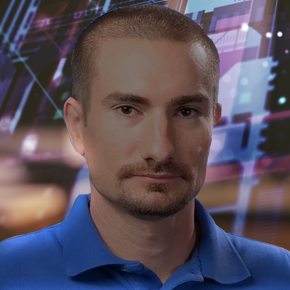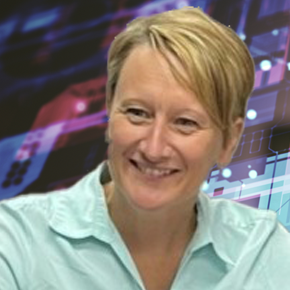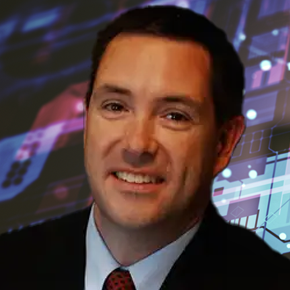February 16, 2023
Sustainable Production Software

Transcript
How To Measure Sustainable Production
It’s time for manufacturers to make good on sustainable production – the promise to reduce the carbon footprint of the products I produce. The only problem is: How do I know how much carbon is in my product? I know how much material it uses, but what about the material wasted in the process? What about the energy input of the machines? What about the shipping miles? It takes a sophisticated model to factor in all of this data and compute a reliable measure of carbon that you can improve. This is what it takes to get to sustainable production, and this is exactly what aPriori’s new solution for sustainability provides, according to the applications engineers who built it.
In the conversation you’re about to hear, which we recorded at aPriori’s most recent Manufacturing Insights Conference, Senior Application Engineer, Daniel Patterson, takes us under the hood of aPriori’s new solution for sustainability.
Leah Archibald: I’m here with Daniel Patterson, who is one of our applications engineers, and he’s gonna give us the inside scoop about aPriori’s new solution for sustainability. So Daniel, tell me what problem you’re trying to solve with this new aPriori solution?
Sustainable Production Software
Daniel Patterson: What we’re trying to solve is calculating the sustainability of a design. It’s easy to understand certain implications of your design for manufacturing. Our tool supports that. But now we’re layering in sustainability to understand the impacts as far as materials and process and how that affects your overall carbon footprint. This makes it a complete sustainable production software.
Leah Archibald: There are a lot of different sustainability calculators out there, but nothing that’s really taking it from the geometric data like aPriori does.
Daniel Patterson: Exactly. We use our robust bottoms-up calculation around cycle time and material utilization, and we use that to drive the sustainability calculations. And it all happens seamlessly in the background, so you don’t have to go run a separate calculation for cost, manufacturability and sustainability. They all happen together in parallel.
Leah Archibald: As you’ve been developing this sustainable production software, what have you had to bake in that’s new in the solution?
Daniel Patterson: We’re building on new UIs to support sustainability, obviously, but we’re also having to understand the energy mix of the machine a lot better. At the process level, aPriori was already understanding the cycle time. But with the sustainable production software, we’ve now done the process mapping to understand how much energy that machine uses throughout the entire operation. So the sustainable production software is really precise in that it understands the CO2 produced by each machine.
Leah Archibald: That’s really different from sustainability calculators that just look at your materials or your waste materials, but aren’t really looking at the whole energy impact of that product coming through the factory.
Daniel Patterson: Absolutely. aPriori’s sustainable production software is extremely precise in these calculations. And it can be tailored to each specific facility. So if you have a solar powered factory, or a wind powered factory, you can recalculate in seconds to understand the differences.
Customer Feedback on Sustainable Production Software
Leah Archibald: What type of early feedback have you been hearing from customers who are using this sustainable production software?
Daniel Patterson: I think it’s really eye-opening to look at a design and understand the true CO2 impact. In a lot of cases, the CO2 impact of designs are higher than expected. Looking at different processes, they maybe had thought, “That machine is going to be a lower CO2 impact.” But they weren’t understanding the full-life cycle of where that materials is coming from and what goes into its processing. With this sustainable production software, now they can see this information.
Leah Archibald: So, I imagine that moving forward, companies are going to be looking for a sustainable production solution to help them meet regulations on sustainability targets. And also because customers are demanding sustainability information on the products they want to buy. But for now, the early adopters using aPriori are really on the cutting edge of having both a baseline and an opportunity to improve on their sustainability targets.
Daniel Patterson: Absolutely. The sustainability standards that we were seeing in Europe five or six years ago are now coming over to the US. And we’re seeing a lot of suppliers having to respond to their OEMs with sustainability on their quote forms. So, if you have a company, let’s say a large automotive company that’s manufacturing a vehicle, they’re going out to their suppliers and they’re not only requesting a price quote, but also a quote around carbon impact. And that’s in the US as well, not just in Europe. So, three is a demand coming from the top down that it’s independent of regulations in the United States. There’s that expectation that when you’re responding to a quote, you’re going to respond with the carbon impact of the product you’re manufacturing.
Leah Archibald: If you don’t have this capability now, you’re going to need it coming around the corner very soon.
Daniel Patterson: Exactly. And you need to change your design process to understand sustainable production. You need to get sustainable production into your designs as you’re designing them, instead of having to go back, redesign to take out carbon, and take out costs like you may have traditionally had to do.
How Do You Implement Sustainable Production Software?
Leah Archibald: If a company already has an aPriori solution installed, how much will they need to change their process to add sustainable production?
Daniel Patterson: Nothing will have to change. aPriori will run those calculations in parallel and it’s reportable as well. So, let’s say you had 10,000 existing parts that you had run through aPriori. You could just re-cost those parts and get a sustainability report at the same time. Then you understand where you are, not only at the part level, but also at an assembly and product level.
Leah Archibald: I love that. Plug and play – very simple. Let’s say a company does not have the aPriori solution already, but they’re interested in both sustainability and profitability. What would it look like for them?
Daniel Patterson: It would just be a normal deployment from that standpoint. Sustainable production is integrated with the same calculation as design for manufacturability and design for cost. So the user just answers those four major questions: what’s my manufacturing process, what material, what region, and how many parts am I making per year? In aPriori you get feedback for cost, design for manufacturability, and sustainability.
Leah Archibald: Well, this is very exciting. Thank you so much for creating this solution for us so that we can make profitability and sustainability a reality for a better world.
Daniel Patterson: Thank you.







